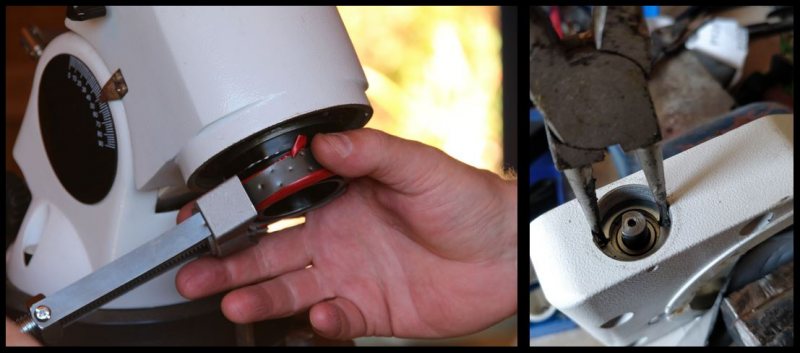Exoplanet Observing with the Unistellar eVscope

Background
Over the last few years, a number of “Smart Telescopes” have been developed for amateur use.
These typically consist of a relative narrow optical train attached to an automated mount. They have software to provide plate solving, tracking and image stacking. They are easy to setup and use.
They have relatively narrow fields and due to their short focal lengths (as well as small apertures) and are best suited to imaging small deep-sky objects.
Unistellar – a French Company setup in 2016 with £2m+ Kickstarter funding – first delivered its scope commercially in 2021. Unlike their competitors they foresaw the possibility of using them for science as well as taking pretty pictures. They partnered with SETI in Mountainview California to produce a program which included exoplanet transit observations.
At 4.5” aperture the scopes are considered too small to take part in the ExoClock program.
Exoplanet Observation

SETI produces a list of favoured targets for study. This is based mostly on the NASA requested targets for the TESS satellite. There are about 12,000 eVscope located all around the world but principally in Europe, the USA and Japan. These were the regions where the scopes were first marketed. About 1500 of these have been registered to the “Science” program and of those my impression is about 100 have been actively used for exoplanet observation. The figures for the week commencing 5/5/24 were 48 observations by 38 observers of 13 targets.
Although there are now several different models of eVscope they are all based around the same optical configuration. This is important as it makes combining data from different scopes relatively easy. SETI have set up a data reduction pipeline that takes uploaded raw frames from participating scopes and produces graphical and numerical output which is returned to participants via a Slack channel. When appropriate, the data from telescopes in different time zones can be combined to allow observations which are impossible from a single site.
This enables long transits to be observed and also long observations of poorly known timings to be tackled. Recently, the program has included candidates whose transits have only been captured 2 or 3 times. The aim is to see if there are any intermediate transits that would suggest a shorter period than originally calculated.
The latest combined observation attempt involved HIP 41378f which has a period of 542 days and transits lasting 19 hours. The ingress was timed to be first visible in S America and then egress in Western Europe. Individual observers were requested to make 2-4 hour observations during the time the star was at least 25 deg above the horizon. The plan was to have the star under continuous observation for 35 hours! (Most people were going to see no transit!). This therefore also included observers in Japan and Australia. 26 telescopes provided data. The results are awaited.
It is possible for single observers to choose their own targets (Usually from the Swarthmore database -astro.swarthmore.edu) and then do their own analysis. Until recently that involved requesting the data from the SETI servers to which it had been sent directly by the telescope’s internal software. This was slow and tedious, involving downloading about 10GB of data which had previously been sent to them. After lobbying from the users, it is now possible to download the data straight from the telescope to a local laptop.
My personal impression is that these scopes will never substitute for results from 8”+ aperture scopes but their uniformity and world-wide distribution plus consistent data reduction means that they have a place in Exoplanet observation.
Mike Rushton











 Image taken with Simon's hi-res Solar Telescope.[/caption]
Image taken with Simon's hi-res Solar Telescope.[/caption] The EQ6 Belt mod replaces the brass gears with a timing belt to reduce errors and remove backlash.[/caption]
The EQ6 Belt mod replaces the brass gears with a timing belt to reduce errors and remove backlash.[/caption] The old and new parts[/caption]
The old and new parts[/caption] Some of the tricky steps[/caption]
Some of the tricky steps[/caption] Threading the belts through the guides can also be tricky, locking tweezers help a lot![/caption]
Threading the belts through the guides can also be tricky, locking tweezers help a lot![/caption] The disassembly required to fit the belt mod.[/caption]
The disassembly required to fit the belt mod.[/caption] EQ6 parts laid out on the workbench, note the old (bottom middle) and new PTFE shims (bottom left)[/caption]
EQ6 parts laid out on the workbench, note the old (bottom middle) and new PTFE shims (bottom left)[/caption] Cleaning all the parts[/caption]
Cleaning all the parts[/caption] Declination worm gear being repaired on the lathe, which was simply a matter of polishing out a surface scratch.[/caption]
Declination worm gear being repaired on the lathe, which was simply a matter of polishing out a surface scratch.[/caption]